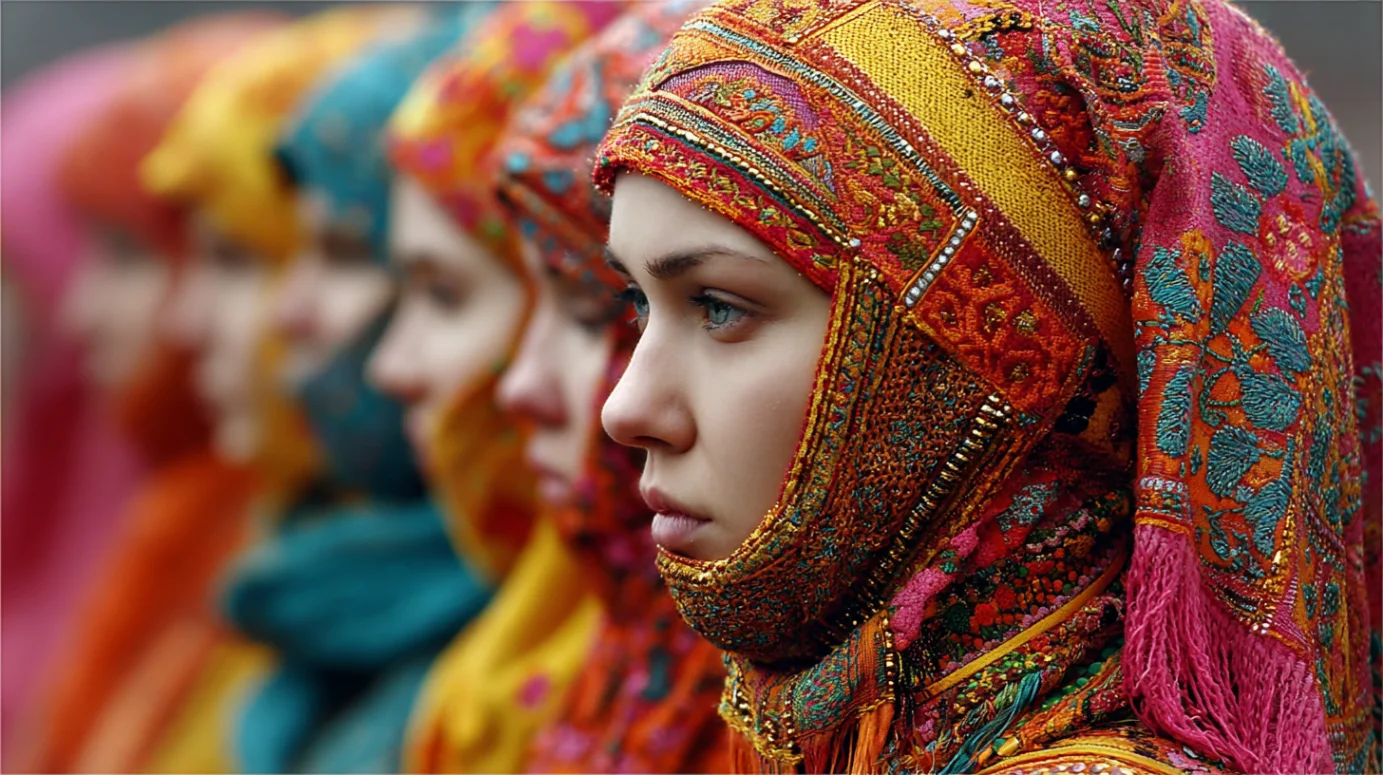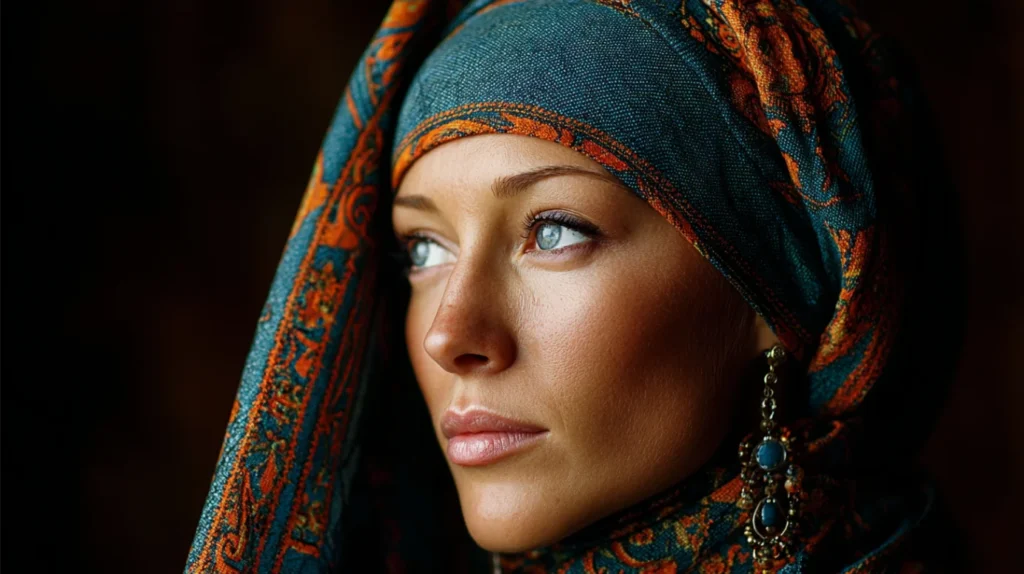
Head covering represents a profound practice that spans cultures, religions, and spiritual traditions worldwide. This ancient custom carries deep meaning, from spiritual protection to cultural identity, and continues to evolve in modern society.
The Psychology of Habit Formation in Spiritual Practices
Environmental Influence on Adoption
The adoption of spiritual practices like head covering often depends heavily on one’s environment and social circle. The more one lives and surrounds themselves with people who are doing the things they want to do, the more likely they are to adopt those practices – it’s really that simple. This principle applies to various lifestyle choices, whether it’s maintaining a vegan diet or incorporating spiritual rituals into daily life.
Cultural Practices of Head Covering Across Different Groups

African Traditions
Women of all cultures – and not just women, men too – wear head covering. African women are particularly known for elaborate head coverings, especially among Nigerians and Ghanaians who wear exceptionally beautiful head coverings. These are typically worn on special occasions, making head covering a significant dress-up affair that celebrates cultural heritage and beauty.
Western Practices
Western women adopt head covering for various reasons:
- Style and fashion expression
- Hair protection and maintenance, keeping hair neat and protected from environmental elements
Historical Context: The Slavery Era
Historical records indicate that during slavery, many slave masters’ wives were jealous of black women and disapproved of seeing black women’s natural hairstyles. Given the creative and elaborate styling capabilities of black women – who can transform even a single strand into an artistic expression – this jealousy becomes understandable from a historical perspective.
Consequently, a rule was established on plantations requiring black women to wear head covering. However, demonstrating their innovative and resilient nature, black women transformed this restriction into an opportunity for creative expression, creating elaborate and beautiful head wraps. This exemplifies how oppressed communities often make the best of any situation, transforming restrictions into forms of artistic and cultural expression.
Islamic Traditions
Muslim women wear hijabs primarily for religious reasons, serving multiple purposes:
- Showing respect to God
- Demonstrating respect within their community
Research reveals that many Muslim women cite protection from unwanted male attention as a primary reason for wearing hijabs. This concept suggests that hair is considered attractive to men, and covering it serves as a protective measure.
However, this reasoning raises questions about the underlying assumptions. While the intention to protect oneself from unwanted advances is understandable, the implication that head covering prevents assault seems problematic. The vast majority of men do not pose a threat, and suggesting that women must cover themselves to prevent rape places responsibility on women rather than addressing the actual small percentage of men who commit such crimes.
The practice makes more sense when viewed through the lens of religious devotion or respect for one’s husband, rather than as a universal protection mechanism against male behavior.
Rastafari Philosophy
The Rastafari community demonstrates diverse approaches to head covering:
- Some wear turbans
- Others prefer tams
- Motivations vary among individuals
- Some don’t practice head covering at all
- Those who do often maintain consistent coverage, never appearing in public without head covering
Modern Contradictions in Sacred Practices
A concerning trend has emerged where some individuals who claim to hold sacred practices will abandon them for social media content. For instance, a Rastafari woman in the Blue Mountain area was filmed by a white content creator, removing her turban and displaying her locks and scalp for the camera. This occurred despite her claims that she never reveals her locks to anyone and never appears in public without head covering.
This behavior represents a troubling contradiction – claiming that hair covering is a sacred sacrament while simultaneously violating that principle for YouTube views and external validation. Such actions raise questions about the sincerity of spiritual commitments when they conflict with social media opportunities.
Many within the Rastafari community would consider such requests from outsiders extremely offensive, as those who truly hold their covenant sacred would never compromise their spiritual practices for external approval.
Rastafari Philosophy and Spiritual Connection
Shared Principles and Universal Consciousness
Rastafari philosophy offers a comprehensive worldview that includes:
- Fundamental spiritual principles
- Shared moral frameworks
- Universal consciousness concepts
For individuals seeking spiritual alignment, Rastafari represents a ready-made cultural framework that provides structure and meaning. This philosophy serves as a spiritual gift for those who resonate with its consciousness and values.
Anyone with similar consciousness naturally gravitates toward Rastafari philosophy, as it provides the most coherent framework for their spiritual understanding.
The Sacred Nature of Hair in Rastafari
Within Rastafari tradition, locks represent a covenant – a sacred commitment honoring Haile Selassie and devotion to Rastafari principles. Hair is protected and covered because it functions as an antenna and connection to the divine – serving as a link to the higher consciousness and connection to source.
Spiritual Reasons for Head Covering
Crown Chakra Protection
From a spiritual perspective, hair covering serves to protect the crown chakra – the energy center that represents the foundation of spirituality and serves as the spiritual connection to source and higher self. Hair functions as an antenna for spiritual energy, making its protection spiritually significant.
Energy Management
When hair remains uncovered, it often attracts intense attention and energy from others. People tend to stare longer and more intensely, creating an energetic exchange that can be difficult to interpret. This attention generates uncertain energy – sometimes positive, sometimes negative – that directly impacts the crown chakra.
Energy protection becomes essential when entering unfamiliar or uncomfortable spaces. Head covering serves as a spiritual shield, preventing unwanted energetic interference. Hair remains uncovered only in comfortable, safe spaces where the energy feels positive and protective.
Digital vs. Physical Energy
The experience of uncovering hair differs significantly between digital and physical spaces. Video interactions don’t carry the same energetic intensity as in-person encounters, making occasional uncovering acceptable in digital formats while maintaining covering in physical spaces.
The primary purpose remains protecting spiritual energy from external influences rather than protection from physical threats.
Religious Perspectives on Head Covering
Extreme Christian Interpretations
Some radical Christian denominations mandate constant head covering for women, based on biblical interpretations requiring women to remain in constant prayer. This theology suggests that since women should cover their heads in God’s presence, and believers should maintain constant prayer, women must wear head covering at all times.
This practice also demonstrates respect for both God and husband, according to these interpretations. While these views represent the extreme end of Christianity, they offer insight into biblical head covering traditions.
Spiritual vs. Religious Distinction
Modern spiritual practices often distinguish between spiritual and religious approaches. Spiritual head covering focuses on energy protection and divine connection rather than worship of a specific deity or adherence to religious doctrine.
Meditation and Constant Spiritual Awareness
The concept of constant prayer aligns with continuous meditation practices. Rather than overthinking, this involves consistently monitoring thoughts and regularly centering oneself spiritually. This creates a state of ongoing spiritual awareness that supports the practice of head covering.
Differences in Spiritual Openness
Traditional religious approaches often remain closed to learning from other traditions, focusing primarily on differences rather than commonalities. However, more open spiritual approaches seek middle ground and common understanding across different practices.
Most spiritual seekers discover that they share more similarities than differences with other traditions. Unfortunately, many religious communities focus on distinctions rather than shared values, which contradicts the essence of Christ-like behavior.
Focusing on Christ consciousness rather than rigid religious doctrine offers a more inclusive and spiritually mature approach to faith and practice.
Contemporary Relevance and Practice
Modern Applications
Head covering continues to serve multiple functions in contemporary spiritual practice:
- Spiritual energy protection
- Cultural identity expression
- Religious devotion demonstration
- Personal boundary establishment
Cultural Sensitivity and Understanding
Understanding the diverse reasons for head covering across cultures promotes greater cultural sensitivity and respect. Each tradition brings unique perspectives and valuable insights that contribute to a broader understanding of this ancient practice.
Questions for Reflection
Those interested in head covering practices might consider:
- Personal motivations for adopting or maintaining head covering
- Cultural accuracy and respectful practice
- Spiritual benefits experienced through head covering
- Community and cultural connections formed through shared practices
Conclusion
Head covering represents a complex intersection of culture, spirituality, and personal practice. Whether motivated by religious devotion, spiritual protection, cultural identity, or energy management, this ancient practice continues to provide meaning and connection for practitioners worldwide. Understanding the diverse motivations and cultural contexts enriches appreciation for this enduring human tradition.





